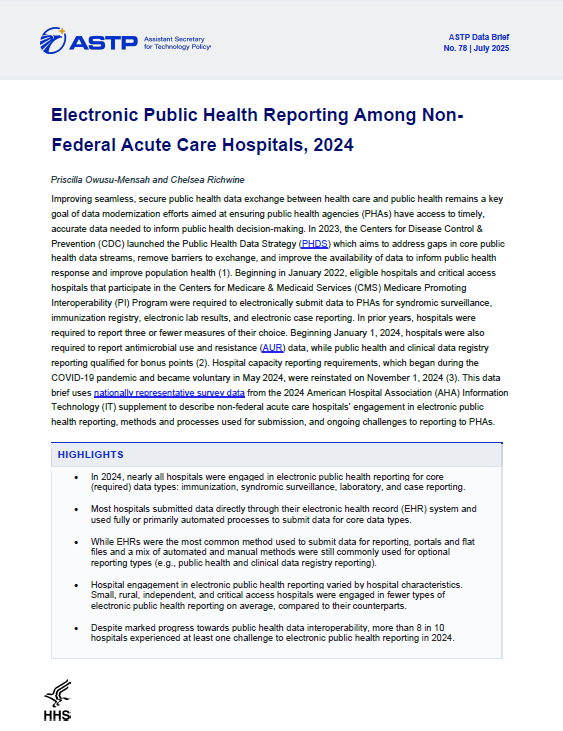
Improving seamless, secure public health data exchange between health care and public health remains a key goal of data modernization efforts aimed at ensuring public health agencies (PHAs) have access to timely, accurate data needed to inform…
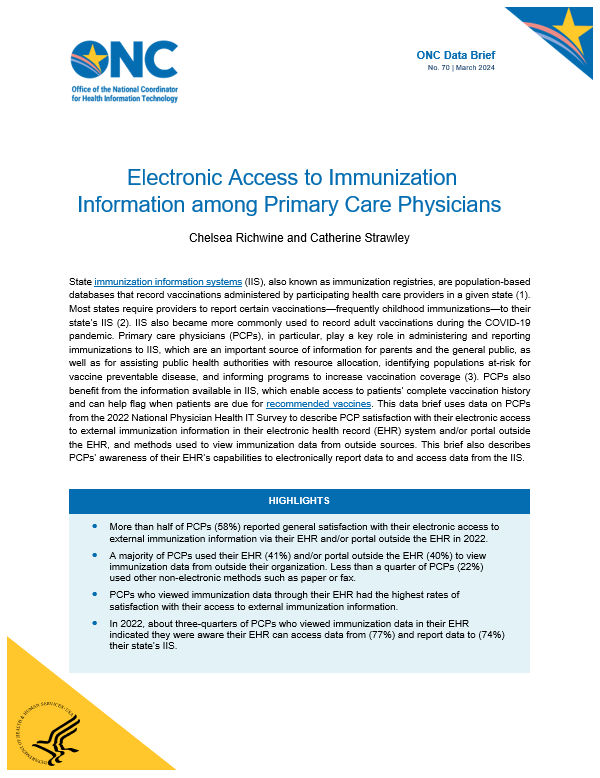
State immunization information systems (IIS), also known as immunization registries, are population-based databases that record vaccinations administered by participating health care providers in a given state (1). Most states require providers to…
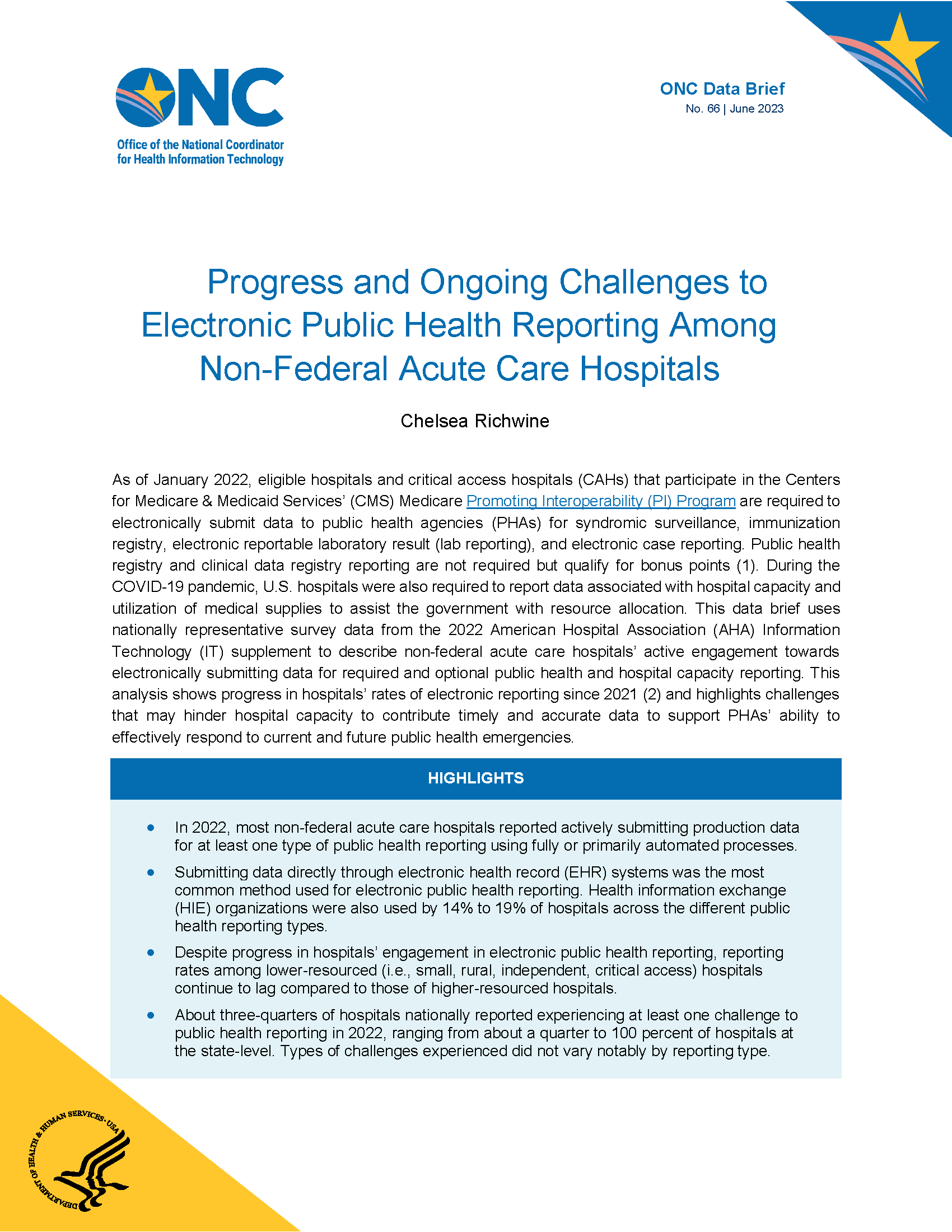
As of January 2022, eligible hospitals and critical access hospitals (CAHs) that participate in the Centers for Medicare & Medicaid Services’ (CMS) Medicare Promoting Interoperability (PI) Program are required to electronically submit data to…
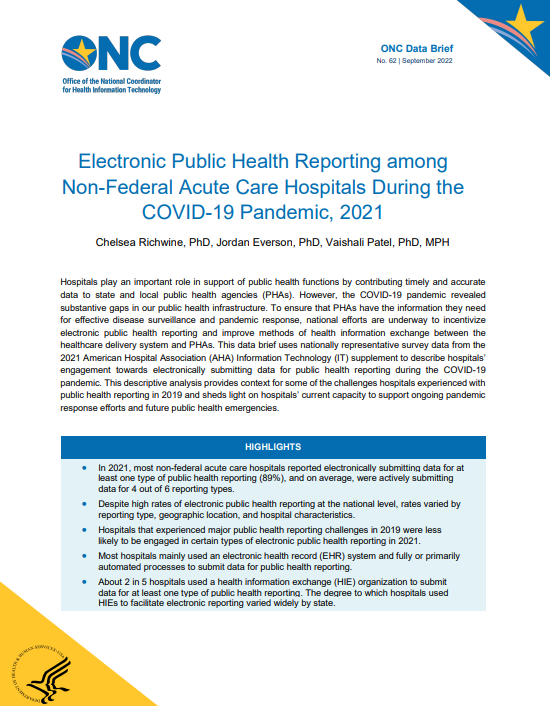
Hospitals play an important role in support of public health functions by contributing timely and accurate data to state and local public health agencies (PHAs). However, the COVID-19 pandemic revealed substantive gaps in our public health…
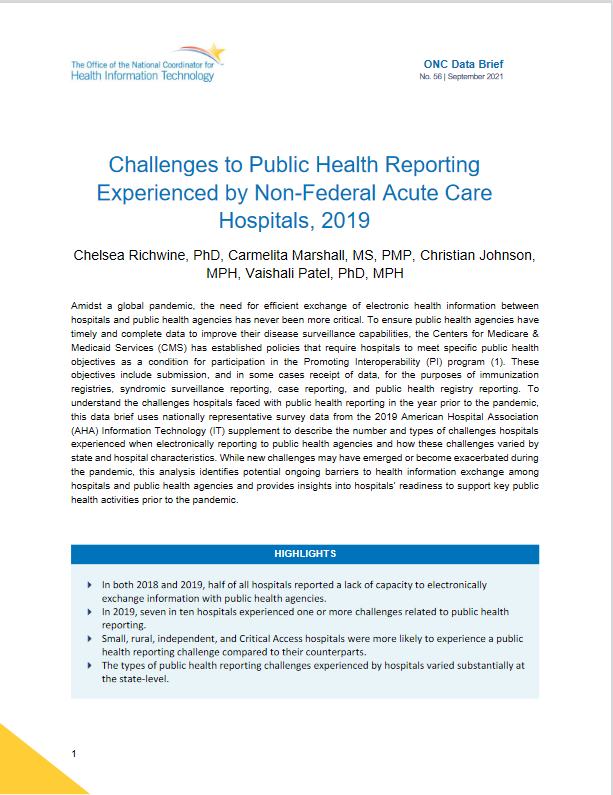
Amidst a global pandemic, the need for efficient exchange of electronic health information between
hospitals and public health agencies has never been more critical. To ensure public health agencies have
timely and complete data…
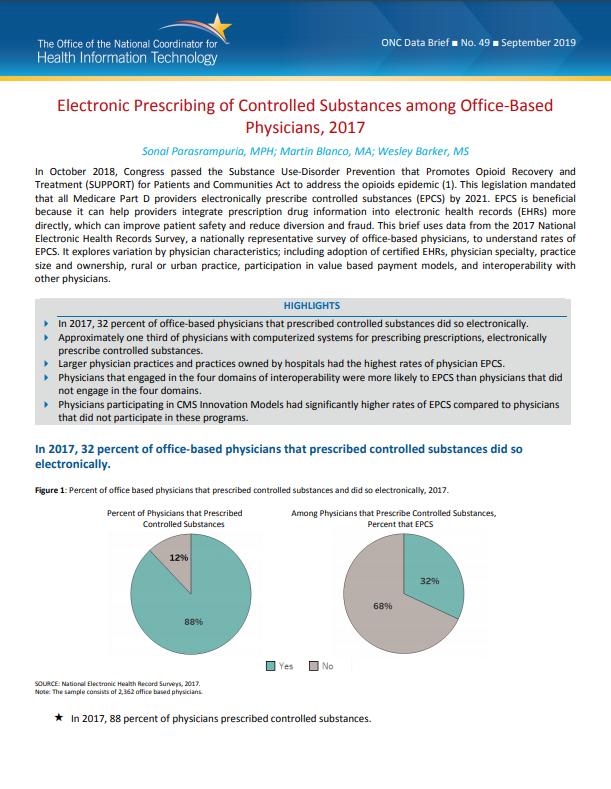
EPCS is beneficial because it can help providers integrate prescription drug information into electronic health records (EHRs) more directly, which can improve patient safety and reduce diversion and fraud. This brief uses data from the 2017…
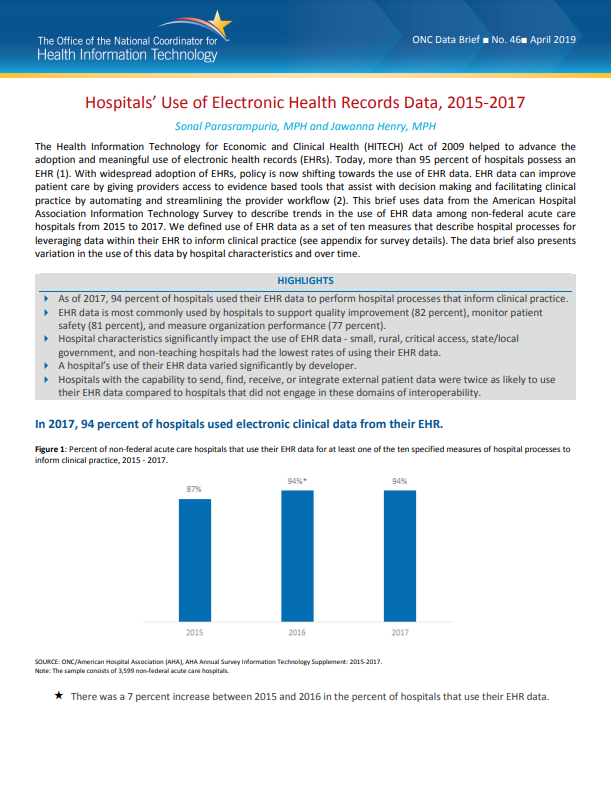
With widespread adoption of EHRs, policy is now shifting towards the use of EHR data. EHR data can improve patient care by giving providers access to evidence based tools that assist with decision making and facilitating clinical practice by…
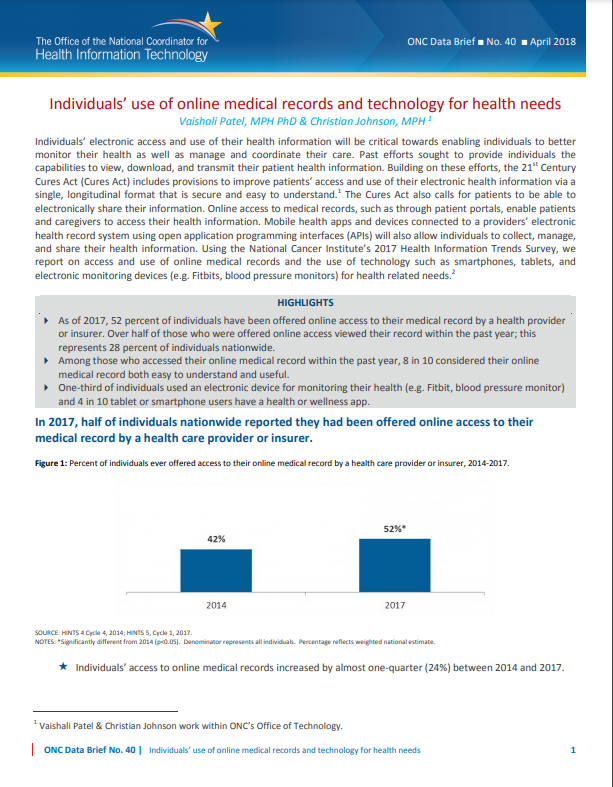
Online access to medical records, such as through patient portals, enable patients and caregivers to access their health information. Mobile health apps and devices connected to a providers' electronic health record system using open…
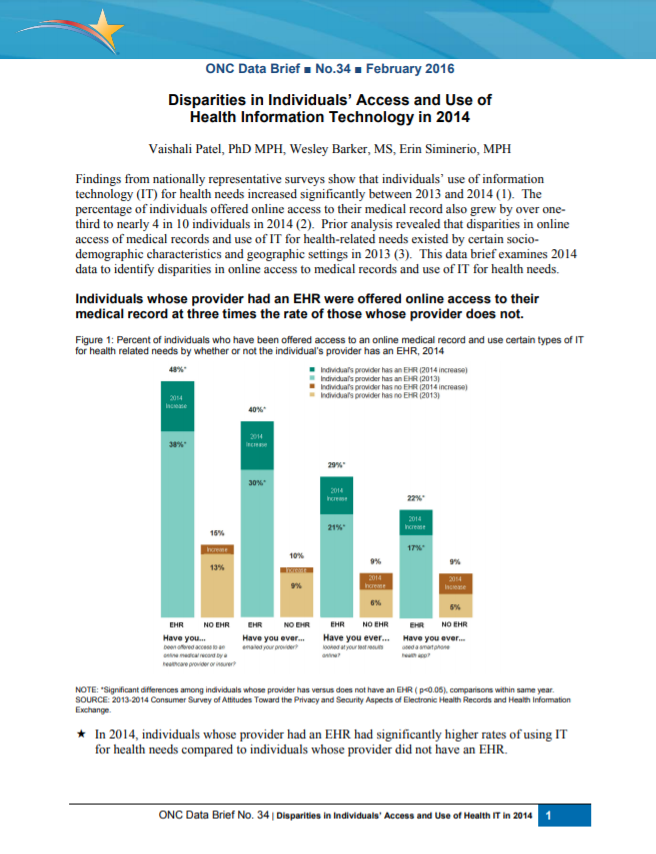
Findings from nationally representative surveys show that individuals' use of information technology (IT) for health needs increased significantly between 2013 and 2014. Prior analysis revealed that disparities in online access of medical…
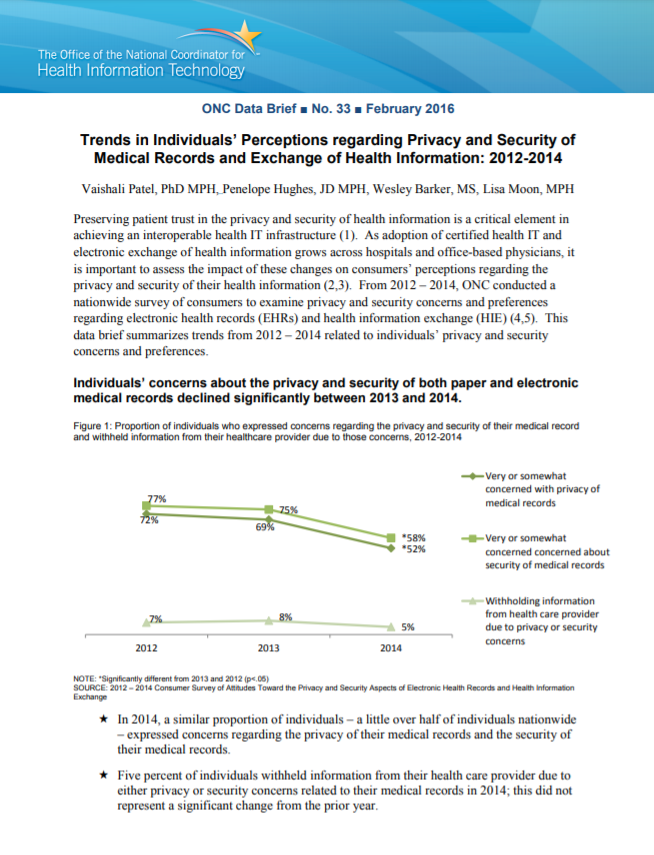
Preserving patient trust in the privacy and security of health information is a critical element in achieving an interoperable health IT infrastructure. As adoption of certified health IT and electronic exchange of health information grows across…
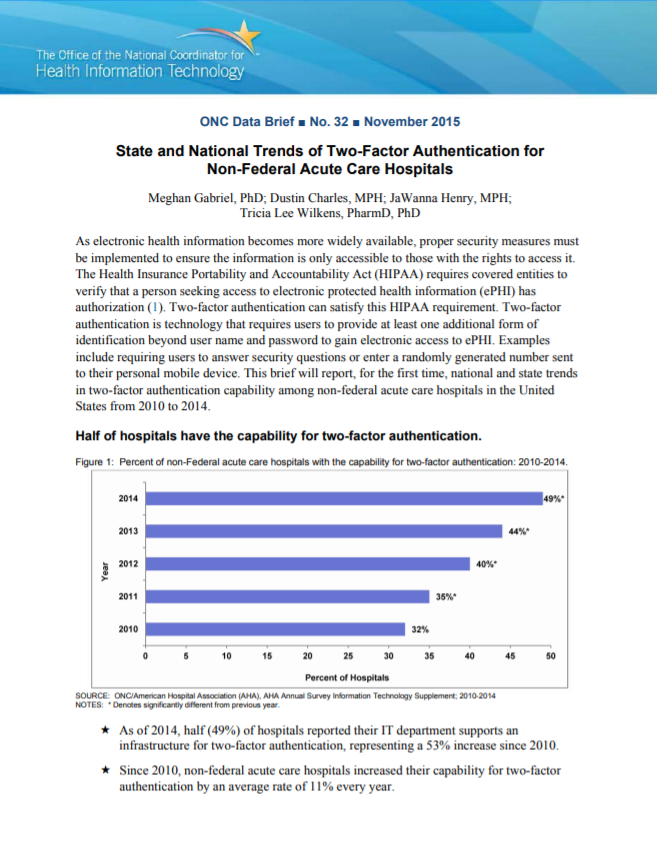
As electronic health information becomes more widely available, proper security measures must be implemented to ensure the information is only accessible to those with the rights to access it. The Health Insurance Portability and Accountability Act…
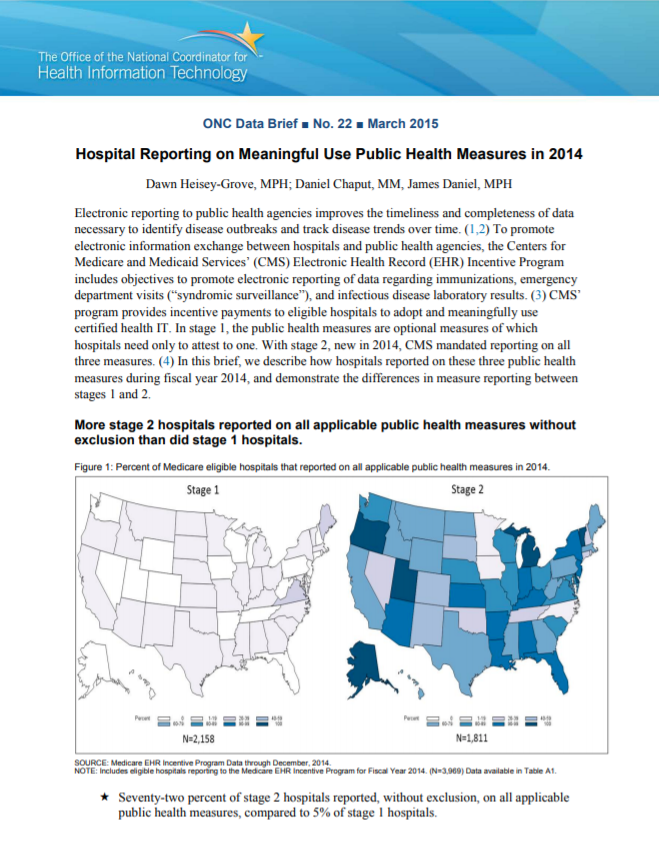
To promote electronic information exchange between hospitals and public health agencies, the Centers for Medicare and Medicaid Services' (CMS) Electronic Health Record (EHR) Incentive Program includes objectives to promote electronic reporting…

This brief uses data from the 2013 National Ambulatory Medical Care Physician Workflow Survey to assess physician-reported impacts of EHR use, both positive and negative, on health care quality and patient safety related outcomes. .
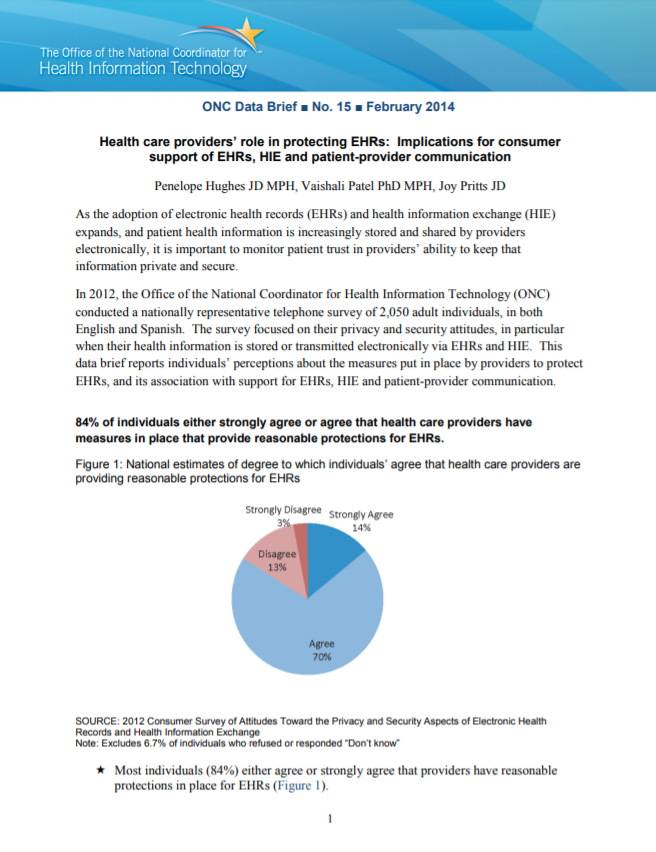
By 2012 84% of individuals either strongly agree or agree that health care providers have measures in place that provide reasonable protections for EHRs. .
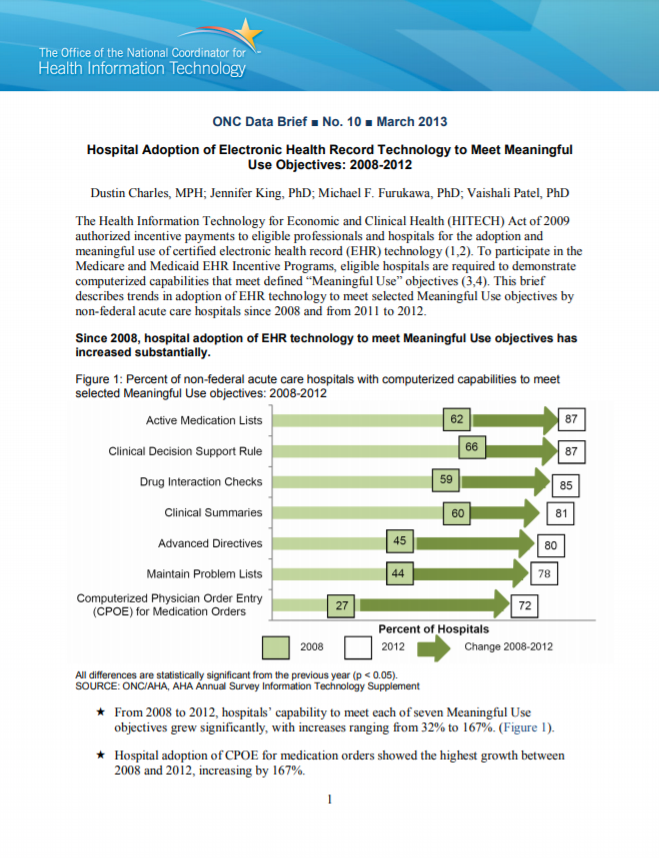
Since 2008, hospital adoption of EHR technology to meet Meaningful Use objectives has increased substantially. This brief explains and contextualizes Quick-Stat #3. .
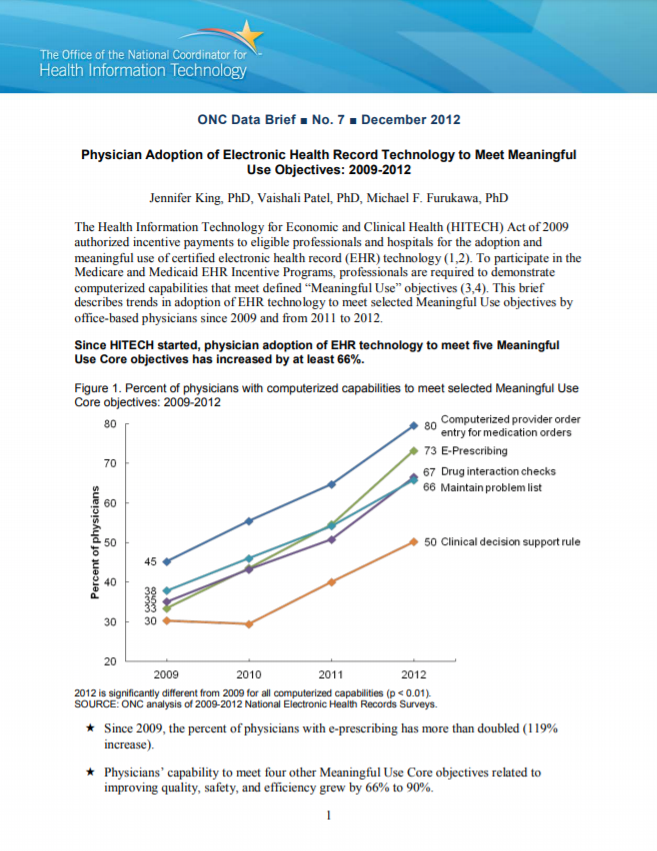
Since HITECH started, physician adoption of EHR technology to meet five Meaningful Use Core objectives has increased by at least 66%. .
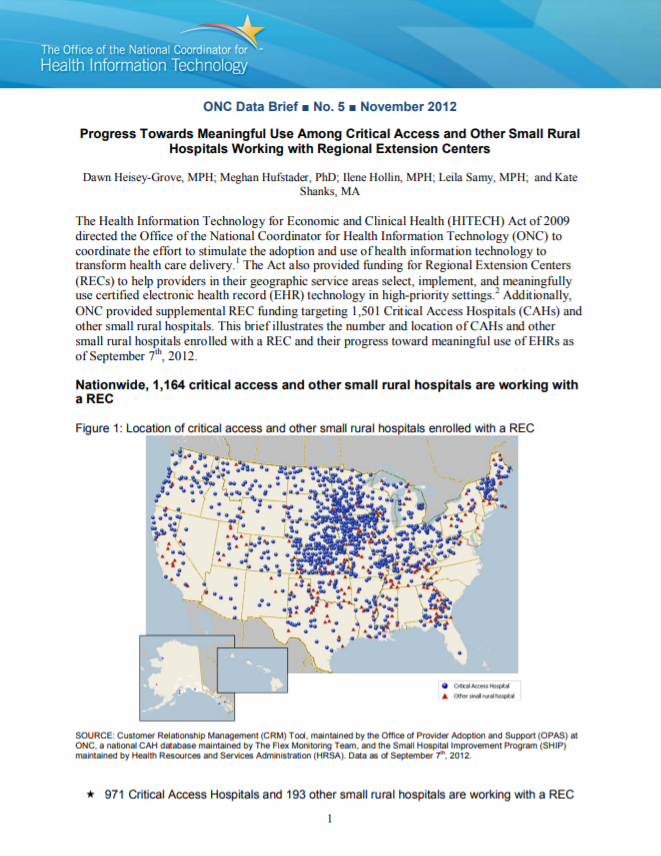
The RECs help providers select, implement, and use certified EHR technology to meet the requirements of the CMS EHR Incentive Programs. This brief describes the REC program's progress assisting 1,264+ safety net hospitals as of 09/2012. .

